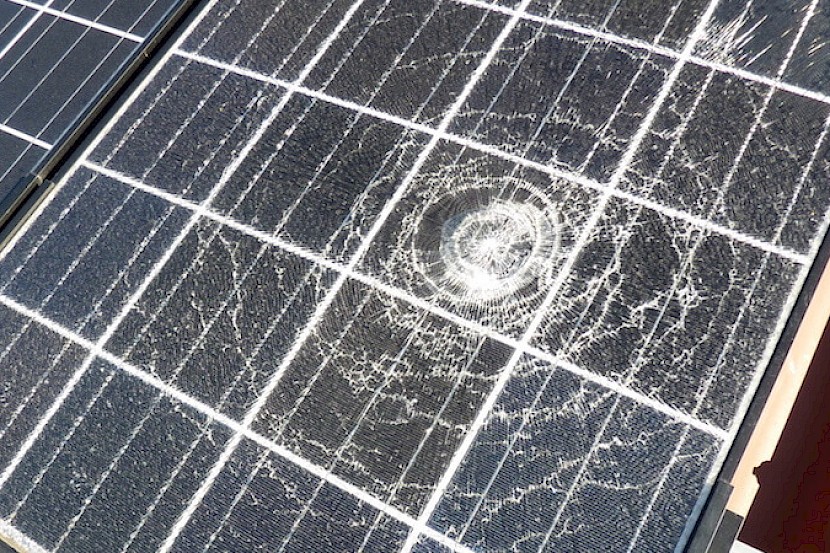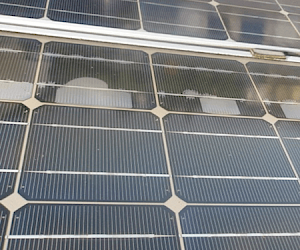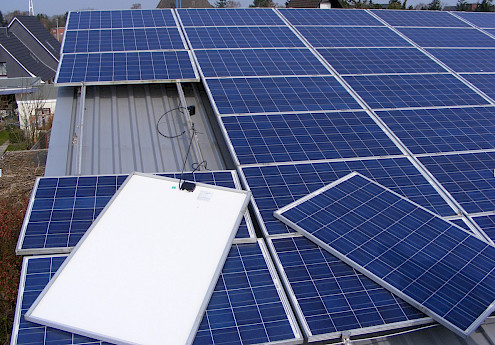
Photovoltaic module repair - what is possible and what is not
There are various reasons why a photovoltaic module can fail. In addition to natural aging, there are primarily external events that can damage a module. In such situations, operators of photovoltaic systems ask themselves a few questions. The most important: Can defective photovoltaic modules be repaired or do they always have to be replaced immediately?
The type of damage determines the solar module repair
Colloquially, the term "solar cell repair" is often used. Although it is possible to replace individual solar cells in the module, it is not really economical. One therefore always speaks of repairing photovoltaic modules. However, whether this is possible depends on the type of damage.
Internal module damage
Internal damage is a problem where no external event, such as a storm, has caused damage to the PV module. These problems can arise from faulty production or a poor selection of individual or all components. Unfortunately, in these cases, a solar module repair is usually not possible.

- Snail tracks
- Delamination
- Hot spots
- Discoloration of the solar cells or cell connectors
- Discoloration of the EVA film (browning)
- Discoloration of the back sheet (yellowing)
- Different colors of the solar cells/cell discoloration
- Inclusions in the laminate
- Scorched spots on the front and/or back
Module damage due to external influences
In most cases, this type of damage occurs in the wake of weather events. Storm, hail, lightning and overvoltage or snow pressure can damage a solar module. But fire, excessive heat or animal bites can also cause damage. The advantage of this type of damage is that the photovoltaic module can often be repaired. But in the case of external damage, the severity of the damage already determines the possible success of the photovoltaic module repair.
Flying debris, broken branches, hailstones the size of tennis balls and collapsed buildings. Storms often cause major damage to solar modules. The result:
- Broken glass
- Microcracks and cell breakage
- Scratched module frames
But cold, snow and ice can also affect the solar modules. In addition to glass breakage in the photovoltaic module, a long and cold winter often leads to bent or frozen module frames.

However, the most common cause for a photovoltaic repair is lightning and overvoltage. A PV module can be broken by direct or indirect impacts in the vicinity of a photovoltaic system. The big advantage of these modules is that you can repair these solar modules. Lightning and overvoltage can cause the following damage:
- Burnt junction boxes
- Defective bypass diodes
Small animals do big damage. Small martens, rats and mice regularly cause the failure of large photovoltaic systems. The small rodents are less interested in the glass modules than in the connections and often leave bites on the solar cables and solar plugs.
Modules that are exposed to fire often cannot be saved. In addition to the flames, the enormous heat can also be a problem. Due to the strong heat development, damage such as scorched backs of surrounding modules can occur.
What can be repaired on a solar module?
You can repair some but not everything on a solar panel. A distinction should always be made between on-site solar module repairs and repairs in a special repair center.
On-site repairs are essentially limited to replacing defective bypass diodes in the junction boxes. But defective and bitten solar cables and plugs can also be replaced. However, if the damage is greater, there is no getting around a special repair center.
Photovoltaic repair by a specialist
A repair center specializes in repairing photovoltaic modules. Among other things, it is possible to replace charred junction boxes. The old socket is carefully removed from the module and a new socket is then placed on the back of the module.
It is also possible to replace the frames on the modules in the workshop. The old bent or burst module frames are simply replaced with new ones.
Another advantage of repairs in the repair center is that the modules are subjected to extensive testing after the repair. In addition to an insulation test, a power measurement is always carried out. With the so-called flash test, the current module output can be determined in watts peak. In addition to the flash test, an electroluminescence image is often also created. With this, cell fractures and microcracks in the modules can be detected.
Can a photovoltaic module glass breakage be repaired?
There is no economical way to repair broken and cracked solar panels. But there are many hobbyists who repair modules with broken glass. They try to seal the surfaces with resin, silicone or other means. However, we would like to advise against using such repaired modules in photovoltaic systems. As a hobby module for camping or in the garden, there is certainly another useful use.




